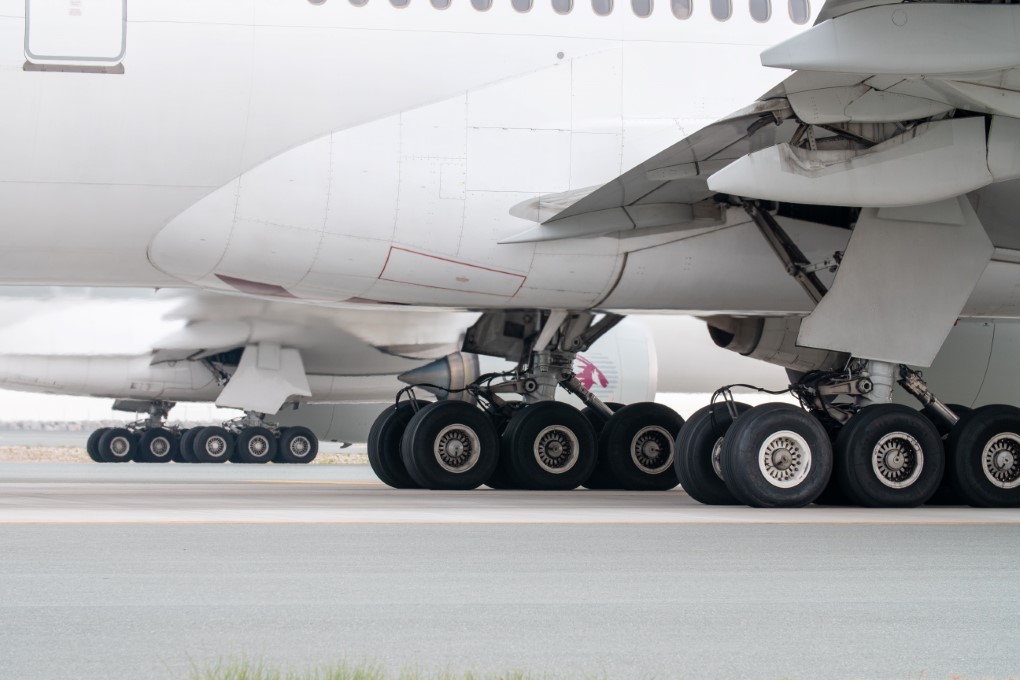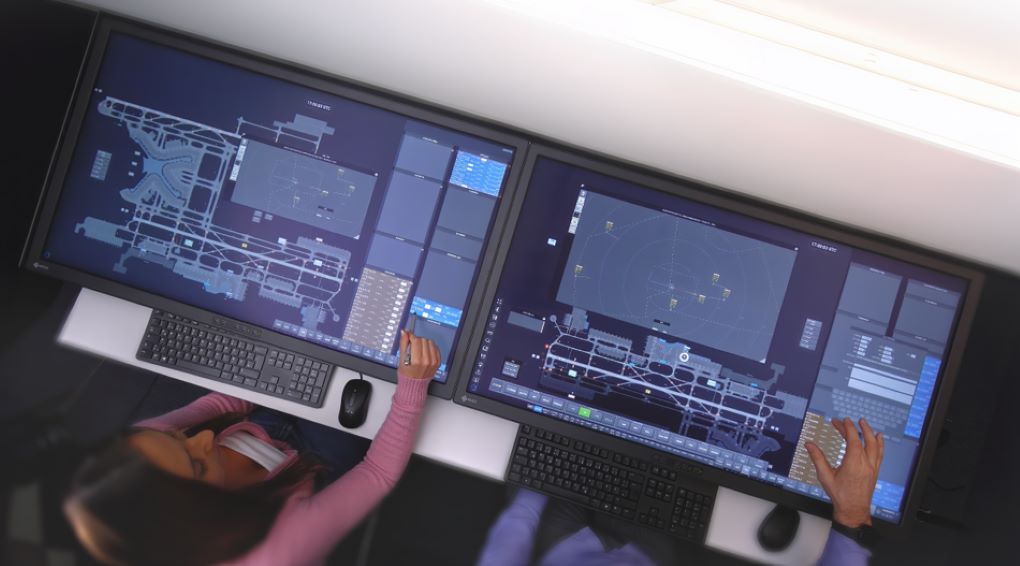
Managing traffic at airports involves a comprehensive approach to ensure safe, efficient and sustainable operations. But balancing efficiency with sustainability is a challenge, and the need for streamlined operations becomes increasingly critical. Airports must manage a growing number of flights while minimising their environmental impact. So how do we support sustainable air traffic growth? Sounds like a contradiction, but it needn’t be.
At the heart of this challenge is the necessity for integrated, seamless operations. Traditional ATC systems often suffer from fragmented data sources and communication channels, leading to inefficiencies, while controllers are tasked with managing complex and dynamic environments, requiring precise coordination and rapid decision-making. The effect of frequent stop and go movements of aircraft on the ground add to fuel consumption and emissions, exacerbating the sustainability dilemma.
To address these issues, airports are turning to advanced technologies such as automation and artificial intelligence (AI) to streamline routine tasks, allowing controllers to focus on the critical decision-making processes. These innovations promise to revolutionise airport operations by enhancing data integration, improving predictability to reduce delays, and “stop and go” movements, improving overall efficiency. So what solutions are we talking about?
Advanced automated tower
Leading this technological shift is the advanced automated tower solution, driving ongoing change in tower operations. Supporting single to multi-screen operations, it enables the entire air traffic control tower to be operated intuitively, giving a clear view of all ground and airspace operations. This system is designed to eventually integrate full Unmanned Traffic Management (UTM). All information, from flight data and weather surveillance to airfield lighting and unified communications, is seamlessly integrated into a single operational display. This ensures maximum awareness and efficiency for the controller. Data is intelligently delivered in real-time, and advanced safety net capabilities continuously track operations and send automated alarms in the event of safety-relevant problems.
The high-definition camera systems, utilised by Frequentis’ smartVision, provide enhanced surveillance and can automatically recognise runway intrusions or debris. The evolution of this technology includes further intelligent air traffic controller automation support, such as the autonomous handling of UTM clearance requests and speech-based recognition of pilot communications for automated routing and enhanced safety nets.

TowerPad
One significant advancement within the advanced automated tower is the TowerPad technology, which has brought about a transformation in the management of operations. All ATC applications are integrated onto one screen enabling controllers to see everything from approach to ground movements without having to access multiple screens. This means that controllers can really focus on what’s going on outside the tower window, as there is less head-down time.
The TowerPad works as part of the Advanced Surface Movement Guidance and Control System (A-SMGCS), to provide tailored services covering surveillance, safety control, planning, routing. It can also sequence operations to minimise aircraft stop and go, which is a major cause of wasted fuel burn when taxiing.
The TowerPad integrates all previously separate ATC systems into a single cohesive system. This integration provides a range of tailored services, including surveillance, safety, control, planning, routing, and guidance. One of the key features of the TowerPad is its ability to detect and resolve conflicts, thus ensuring smoother and safer ground movements.
This solution was integrated at Zayed International Airport, Abu Dhabi, in 2022 and the biggest challenge was the change in how tower operations were managed. By working with the customer, Abu Dhabi’s Global Air Navigation Services (GANS), from an early stage and working together with their air traffic controllers (ATCOs) to understand their requirements, was key to ensuring a smooth transition.
With the implementation of the TowerPad, Zayed International Airport significantly improved its operational capabilities and efficient management of runway traffic, thereby assisting the airport in achieving its efficiency and sustainability goals.
This collaboration not only enhanced the operational capacity of the system but also provided valuable experience and insights that can be applied to other projects in the region. This partnership underscored the regional importance of Abu Dhabi International Airport as a mega hub, highlighting the increasing traffic and the need for innovative solutions to boost capacity and sustainability.
The solution is now also being implemented at Istanbul Sabiha Gokcen International Airport in a phased approach.
The role of AI
While artificial intelligence serves as a powerful support tool, it is designed to enhance, rather than replace, human controllers. Leveraging AI allows controllers to focus on more complex and critical aspects of air traffic management.
In addition to TowerPad, the Advanced Automated Tower includes various solutions, which showcase the transformative potential of advanced technology. SmartTOOLS, an integrated information and control system, automates routine tasks, provides real-time data analysis, and enhances situational awareness, proving essential in high-capacity towers worldwide. Similarly, SmartSTRIPS revolutionises flight data management by automating data entry and reducing human error, thus supporting tower digitalisation programs. A-SMGCS optimises ground movements and detects potential conflicts through advanced data analysis, ensuring safety.
The X10 Voice Communication Solution further emphasises the role of AI by using voice recognition to streamline communication and reduce workload. Meanwhile, the Departure Manager and Integrated Arrival Departure Manager help predict traffic patterns and optimise sequences, enhancing airport efficiency and minimising delays.
AI in tower operations will support the ongoing trend towards automation and digitalisation in the aviation industry. By integrating advanced technologies, airports can achieve higher levels of efficiency, safety, and sustainability, ultimately enhancing the passenger experience and supporting the growth of the aviation sector. Frequentis is actively evaluating and working on integrating AI functionalities, which are expected to significantly impact the market in the future.

Supporting sustainability goals
Sustainability is a key focus across the aviation industry, and the advanced automated tower system plays a crucial role in helping customers to achieve their decarbonisation goals. Thanks to AI’s capability to analyse vast amounts of data in real-time, the system can optimise ground movements through efficient routing and guidance, which minimises taxiing time and reduces fuel consumption.
In addition, by maintaining a declared surface movement rate, the TowerPad ensures operational efficiency, contributing to the airport‘s sustainability initiatives but also aligns with broader industry efforts to reduce carbon emissions.
Safety and efficiency gains
The implementation of the TowerPad within Advanced Automated Tower has brought about notable safety benefits across airport, airline, and ATM operations. One of the key improvements at Zayed airport is the reduction in the radio transmission time, which has decreased by an average of six seconds per arrival and eight seconds per departure. This reduction provides controllers with more time for planning and coordination tasks, enhancing overall operational efficiency.
Key safety and efficiency benefits include: an 80% reduction in stop and go movements, minimising delays and improving the flow of ground traffic; a 30% increase in ground movements, enhancing coordination and routing capabilities allowing for more efficient use of airport ground space, and facilitating a higher volume of aircraft movements, and and up to 70% reduction in operator workload through the automation of routine tasks and the provision of decision-support tools
As the aviation industry continues to grow and evolve and airports navigate the demands of increasing traffic and stringent sustainability targets, automation and AI stand out as key tools in achieving a more efficient and eco-friendly aviation industry. Advanced automated tower technologies will play a crucial role in supporting the development of smarter, greener, and more efficient airports worldwide. v
